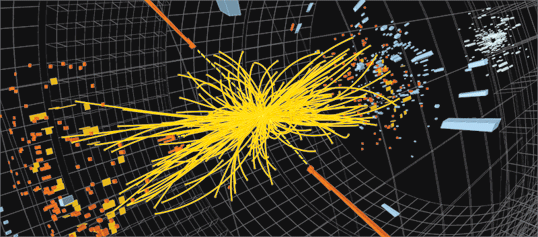This past July, physicists at the Large Hadron Collider at CERN outside Geneva, Switzerland, revealed a new subatomic particle that they believe is the elusive Higgs boson-the key to understanding why there is life in the universe.
Researchers at the U of A were heavily involved in the construction and installation of the ATLAS detector, one of two detectors that independently observed that mystery particle.
Over the years professors James Pinfold, Doug Gingrich and Roger Moore, as well as members of their particle physics group, have spent countless hours working on design, construction and data analysis on the U of A campus and made dozens of trips to CERN to install equipment, run beam tests and take results directly from the ATLAS detector.
Although there is much work still to be done in determining the precise nature of the particle and its significance for our understanding of the universe, the magnitude of the discovery is immense, especially for those who have been intimately involved in the project from the beginning. "This is a moment particle physics has been waiting for," says Gingrich. "It renews the dream many of us first had 20 years ago when we set out to discover the Higgs boson. The page turns, as we now proceed to study the properties of this new particle and determine its true identity."

We at New Trail welcome your comments. Robust debate and criticism are encouraged, provided it is respectful. We reserve the right to reject comments, images or links that attack ethnicity, nationality, religion, gender or sexual orientation; that include offensive language, threats, spam; are fraudulent or defamatory; infringe on copyright or trademarks; and that just generally aren’t very nice. Discussion is monitored and violation of these guidelines will result in comments being disabled.